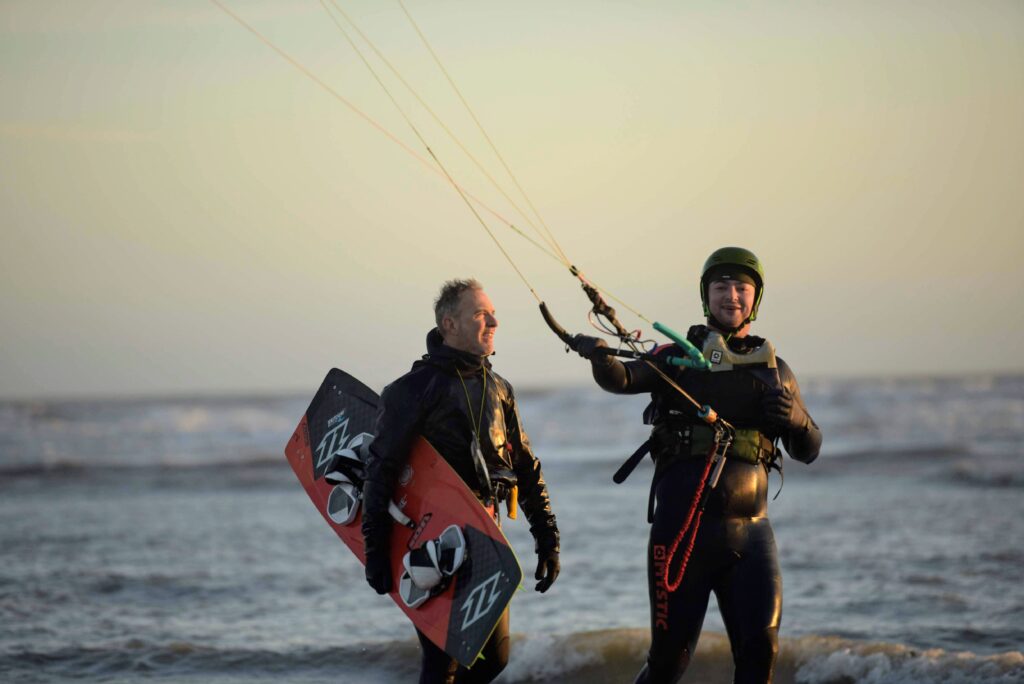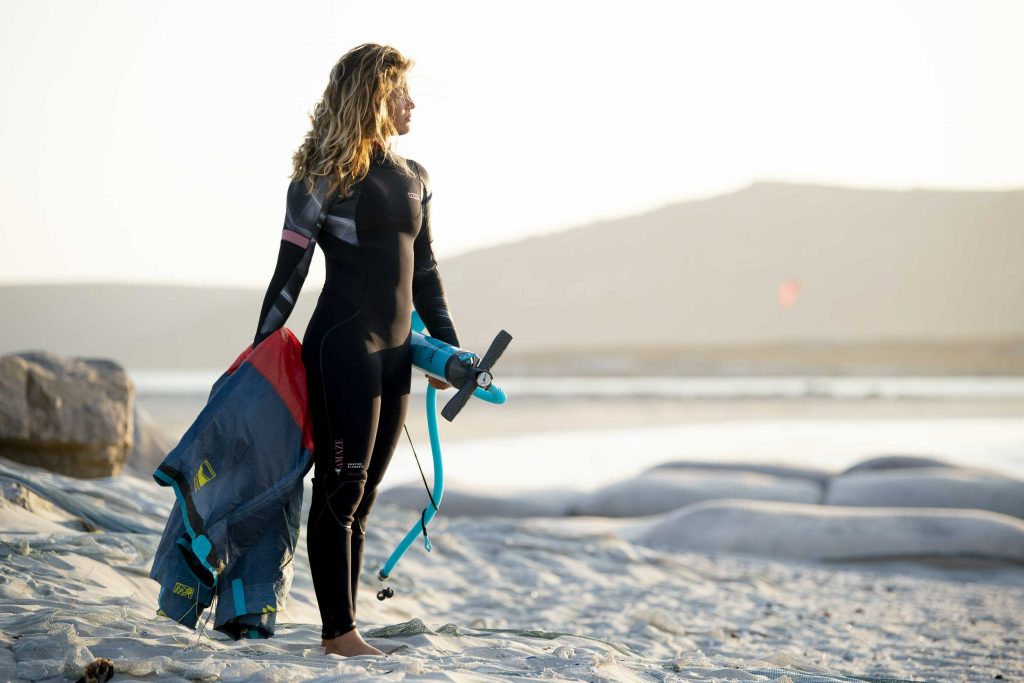
Wetsuits are pretty miraculous pieces of kit. Refined through over 50 years of R&D, these highly specialised body-suits enable us to spend hours in the water without becoming too cold; an impossibility without them. However, they only work if they fit as they should. Too loose, the water will flow through and drain your body heat. Too tight, and they will be uncomfortable and limit flexibility, so it’s well worth spending the time to ensure that you get the right design and fit for you. The better the wetsuit is, the warmer and more comfortable you will be, and the longer you can stay out on the water. We hope you enjoying this wetsuit buyer’s guide
How they work
Wetsuits are made of a light-weight and stretchy material called neoprene; a synthetic type of rubber. Wetsuits work in two fundamental ways.
- Firstly, they trap a small lining of water between the rider and suit. This is heated by the body, and acts as a warm blanket that reduces the radiation of body heat.
- Secondly, neoprene has superb insulation properties. The material is peppered with small bubbles of trapped air that greatly reduce the transfer of heat. These also add buoyancy.
Different Types of Wetsuits
The recent surge in watersports interest (think SUP) has driven manufacturers to push the wetsuit design and technology to cater for all body shapes and abilities. Let’s take a look at the main designs.
Shorties
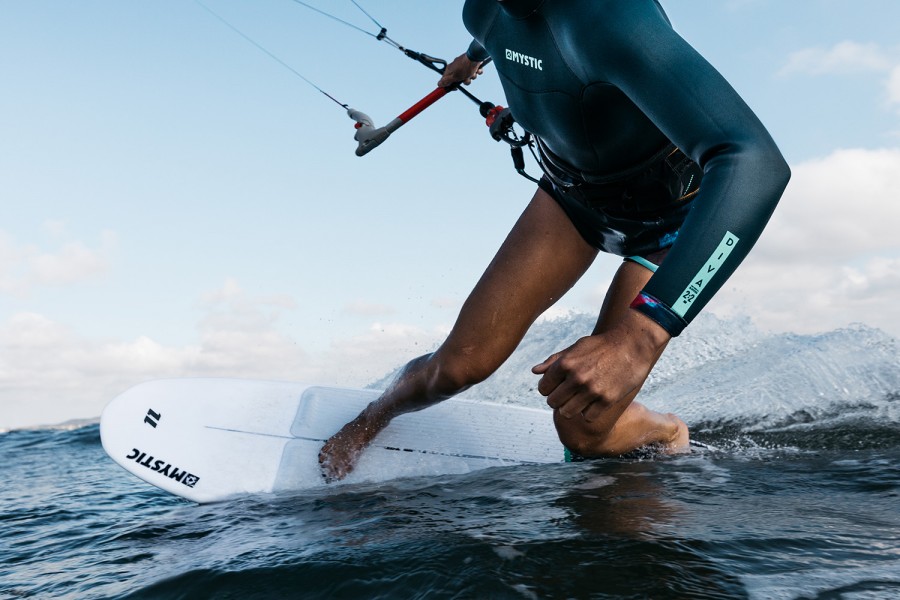
These make a great summer-time option, and are particularly popular with children’s sizes. They cover the torso and upper limbs. This makes them easy to get into, and enables good flexibility for general beach fun. They are great for protecting children from the sun, and keeping them warm when the sun begins to dip. They are also relatively cheap; ideal for growing children.
Full Body
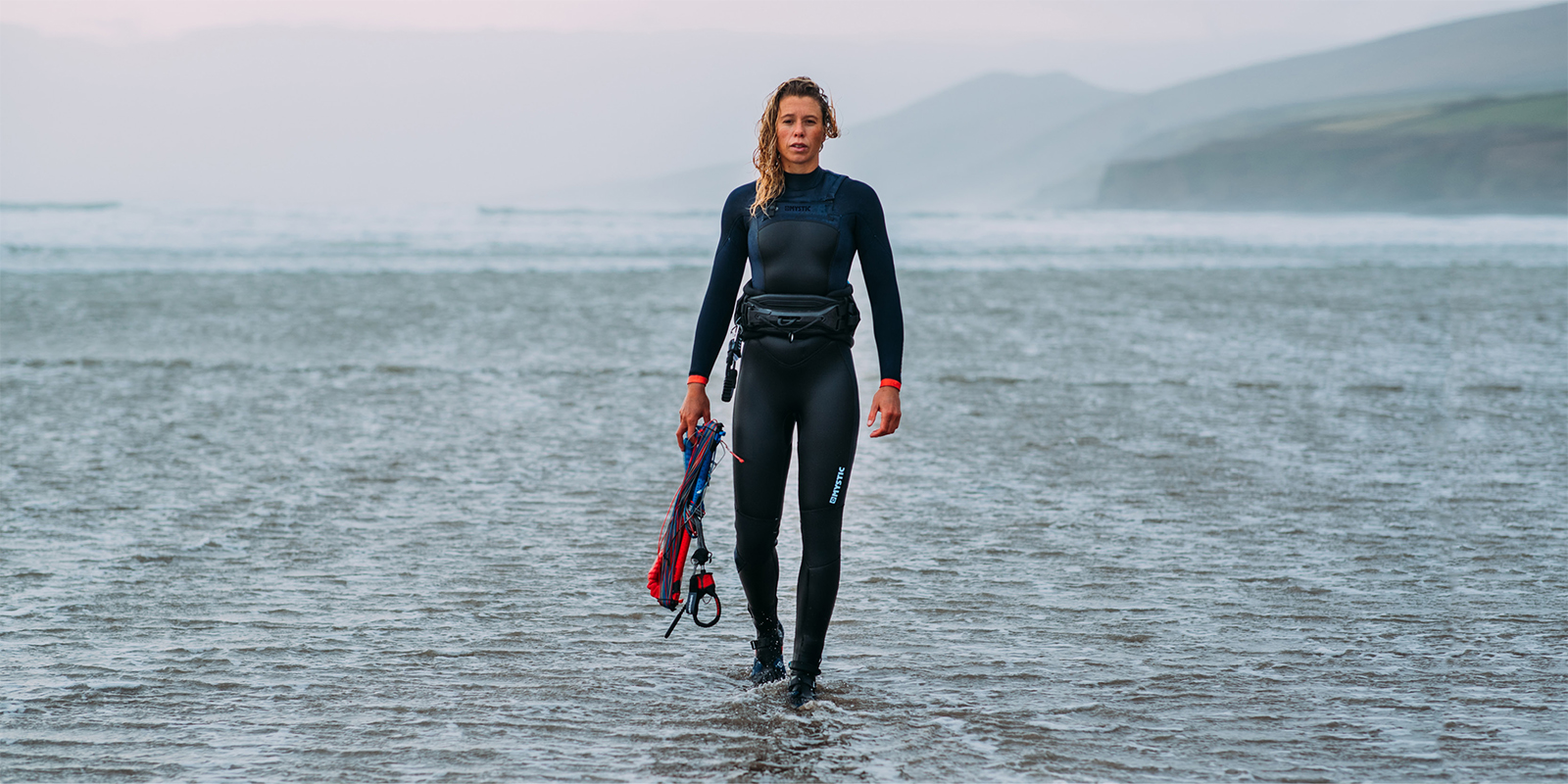
These cover the entirety of the body, except for the head, hands and feet. They come in a range of thicknesses and technologies to cater for all the UK seasons. Many regular riders will have a summer and a winter full body wetsuit to ensure they don’t become too hot in summer, and too cold in winter. Some also come with a hooded option; particularly useful for surfers and swimmers who spend time with their head submerged.
Entry Types
This is a fundamental consideration when choosing a wetsuit. Many manufacturers have focused on entry systems in search of the perfect combination of ease of use, flexibility and warmth. With a range of systems available, what is right for you will depend on your body shape, flexibility, and the temperatures you’ll be riding in.
There are 3 types; the Front-zip, the Back-zip, and the Free-zip.
Back-zip
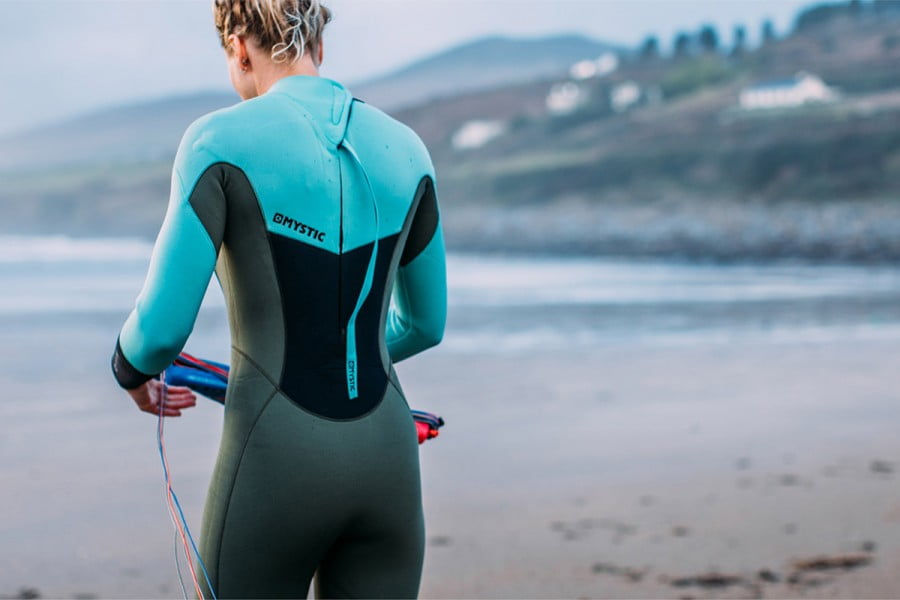
The the traditional entry design. The zip runs down the back of the wetsuit body, providing a large area of access. As such, these make a great choice for larger bodied individuals, including those with limited flexibility who may struggle to put on chest-zips. However, the size and location of the zip can limit upper body flexibility, whilst being liable to small amounts of water ingression. A good choice for summer wearing.
Front-zips
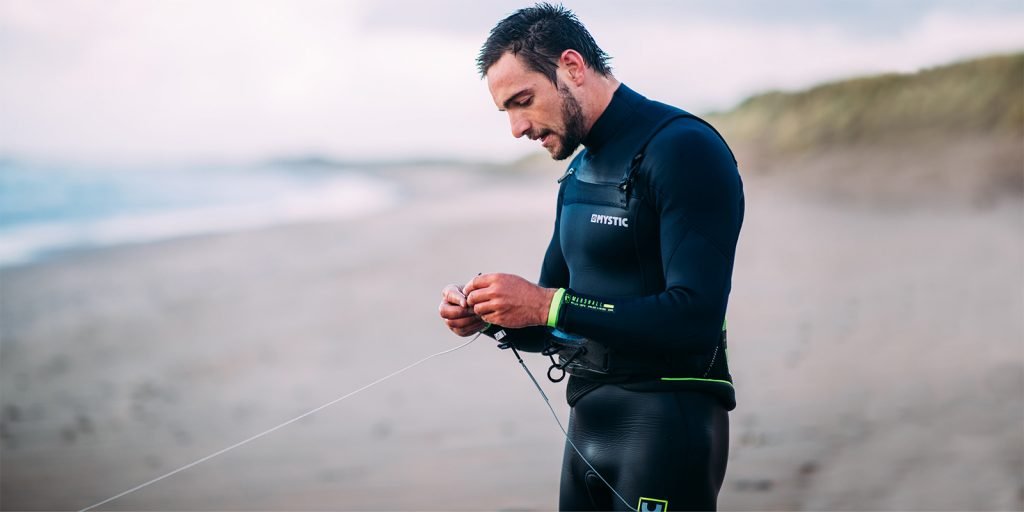
This design has followed on from back-zips. They have the benefit of having a small front zip. This means there is less seam for water to seep in through, whilst a single piece back panel increases wetsuit flexibility. They also have a more effective neck seal, making them the choice for colder waters and seasons. Access is more of a challenge, requiring good upper body flexibility. With their improved efficiency, front-zips are winning the popularity battle over back-zips. For seasonal and winter riding.
Free-zips
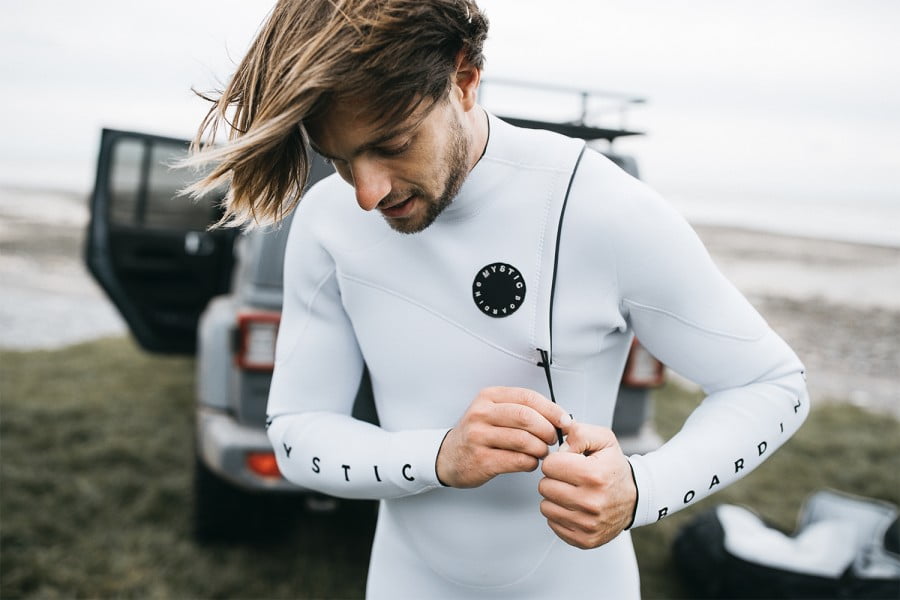
These are the latest offering from manufacturers, and target the high-end of the market. They have no zips to fiddle with, which are liable to seize and break if left unused or poorly looked after. The added neoprene flexibility required for entry tends to limit Free-zips to summer configurations. A great choice as a high performance summer wetsuit.
Wetsuit Features
From internal linings to sealed seams; ultra flexible neoprene to ankle straps, there is a host of additional features to choose from that increase a wetsuit’s flexibility, warmth, and durability. The most important consideration is how the various shaped panels that make up a wetsuit are joined together.
Flat stitch
This is used on cheaper and summer wetsuits. One edge of the panel is sewn over the opposing edge using a flat lock stitch. Although effective at joining the panels, this puts lots of holes through the neoprene, enabling water to get inside the wetsuit. These stitches also reduce flexibility, and can sometimes cause discomfort on the inside. These are a good option for a cheap introductory wetsuit, and for children.
Blind stitch
With this method, the stitching doesn’t go all the way through the neoprene; rather, it passes halfway through the seam and then comes back to the outside. This prevents water entering through any tiny holes. It also helps prevent warm water on the inside escaping. The panels are also glued to increase strength. This makes them considerably warmer; a good choice for winter and seasonal riding.
Welded seam
This is a feature of top-end suits. Instead of using a stitch, a strong silicone based glue binds the panels together. The absence of thread gives the suit unparalleled flexibility. Further strength is provided by a liquid seam. This runs along the inside and outside of the seam to further guarantee water tightness. A great choice for those wanting the best with high budgets.
Other Features
Sealed entry points
Higher end wetsuits often include features to further minimise flushing through the ankles and wrists; a handy feature, especially when body dragging. This can be a silicone seal, or a neoprene band. The water displacement from a kitesurf twintip board often shoots a jet of water up the inside of the back leg. Some wetsuit have a Velcro strap that tightens around the ankle to prevent this.
Ergonomics
More expensive wetsuit are typically constructed from materials that are optimal for specific areas of the body. For example, fleece lined chest panels are designed to maximise heat retention in the torso, whilst stretchy neoprene variants are used on the arms and legs to maximise flexibility. Particularly for the more dynamic styles of kitesurfing, such as freestle and surf, good wetsuit flexibility enables riders to remain agile and responsive, without compromising on staying warm.
The fit
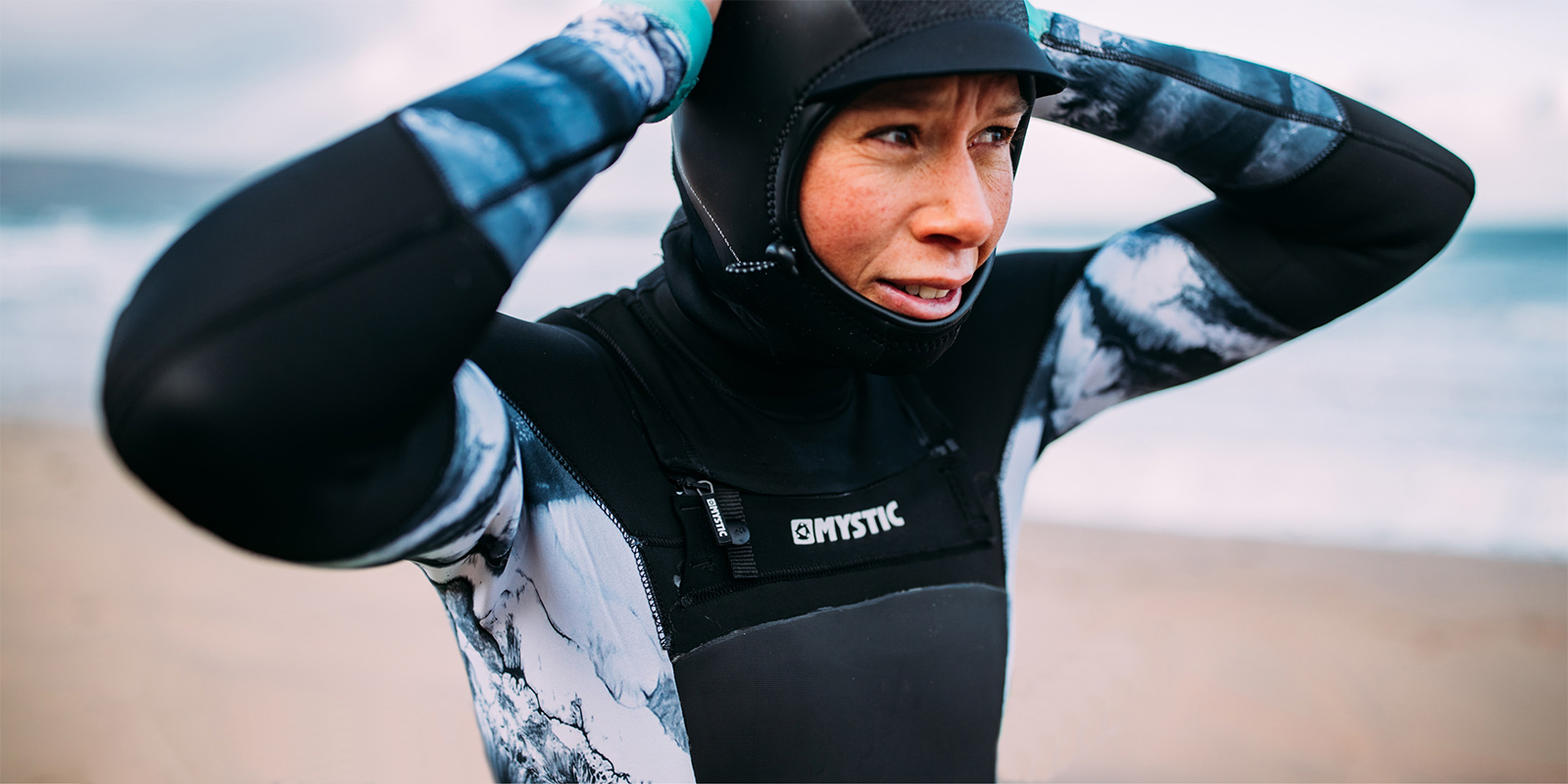
The correct sizing is essential to a wetsuit’s ability to function, and the best way to know is to try it on. If you are purchasing over the internet, base your choice on what you already wear. For women, the size of wetsuit is the same as the size of a dress. For men, we recommend your size of shirt. The torso and chest should fit tightly, and the legs and arms of the wetsuit should reach your ankles and wrists. The ends should be tight around your legs and arms to ensure a good seal. The following chart can be used as a guide:
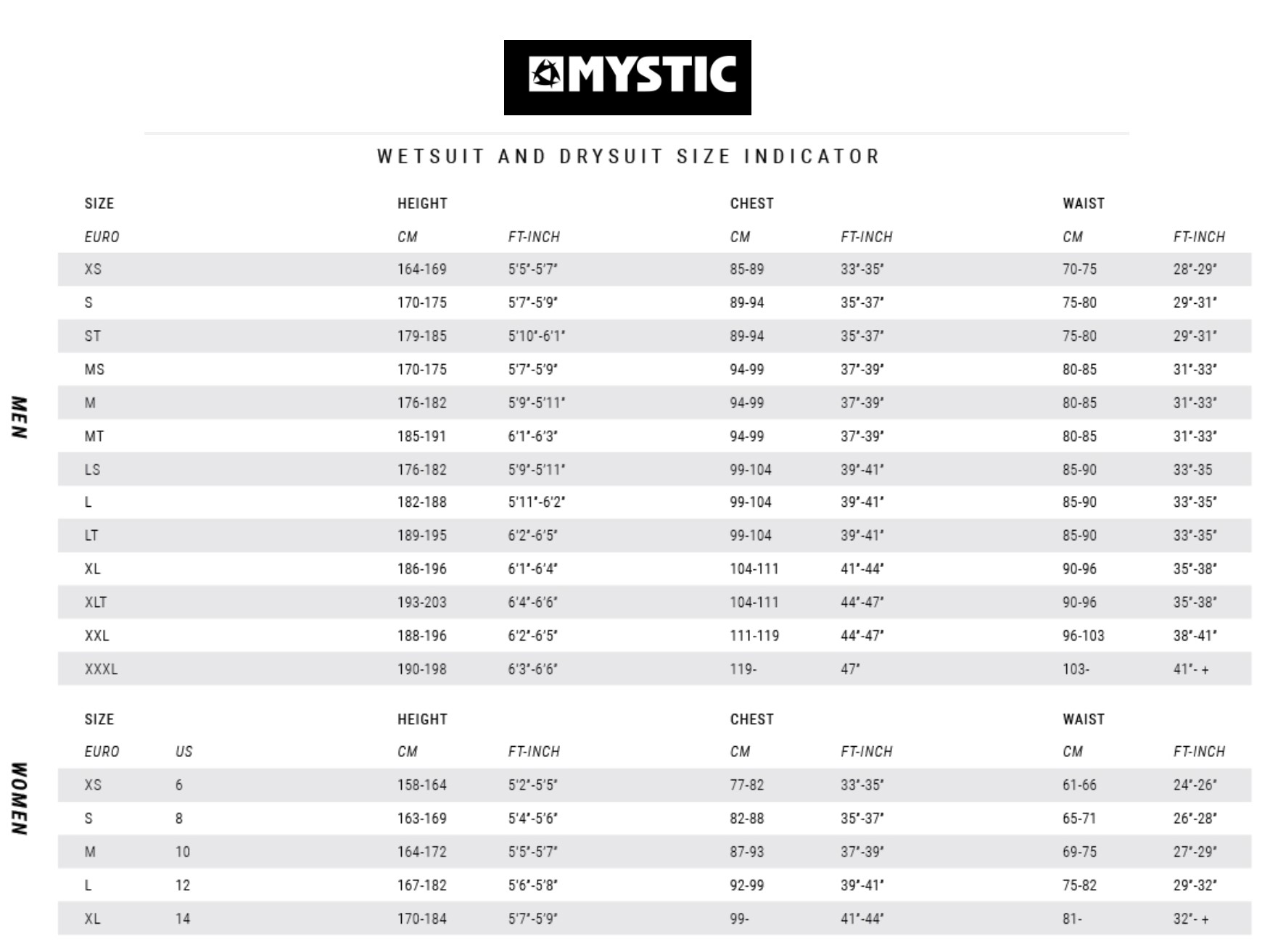
Looking after your wetsuit
Wash
Regular washing of your wetsuit will ensure it lasts as long as possible. If left unwashed, salt crystals from the seawater will build up within the fabric and zips. This degrades the materials and can seize up the zips. Give your wetsuit a good few dunks in a bucket of clean water, ensuring that it is entirely submersed, and both the inside and outside have had a good rinse. There is no need to use any chemicals, though these are available if you wish. You can also wash it in the shower with you, though be careful not to use hot water as this can degrade the seems.
Dry
If your wetsuit is going into short or long term storage, it’s important to dry it thoroughly, otherwise mould will grow and odours will develop. Hang it up on a supportive hanger in a dry area. Make sure you reverse it so that the other side can also dry. Using thin hangers can cause the neoprene to stretch under the weight. Hanging it over a railing or bar of some sort is best.
Repair
Rips can occur, especially around the bottom of the legs, where wetsuits are subjected to the most stress. There are glues available for plugging holes, and anyone adept on a sewing machine can stitch holes back up. It’s best to use a technique that remains close to the original seam method. Some wetsuits can fail under warranty. In such a case, you will likely be supplied with a new one after contacting the supplier.
Finally
It is recommended that you purchase a wetsuit in-shop. That way, you can speak with our friendly and experienced staff to develop a good understand of wetsuits, and see and feel how they are made for yourself. Also, there is no substitute for trying on a wetsuit to ensure it is the correct fit. If you intend to buy online and still feel unsure, give our shop a call, so we can guide you towards your perfect wetsuit. We hope you’ve enjoyed reading this wetsuit buyer’s guide.
